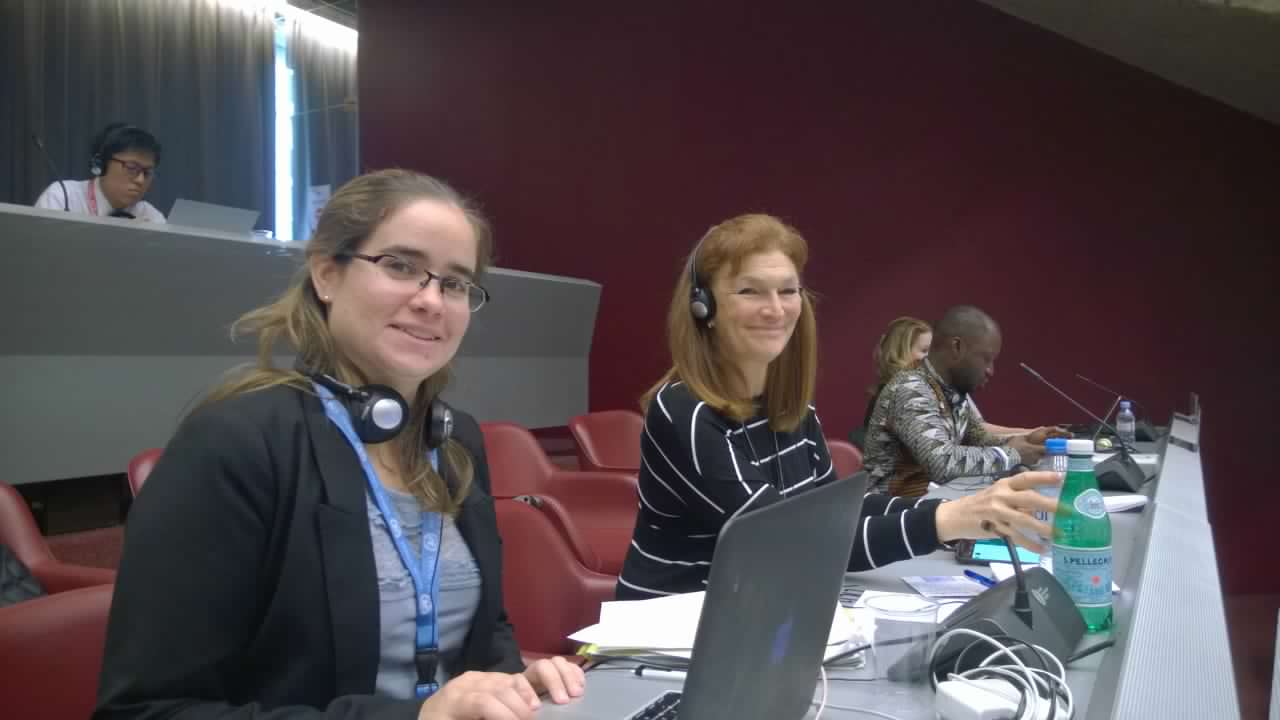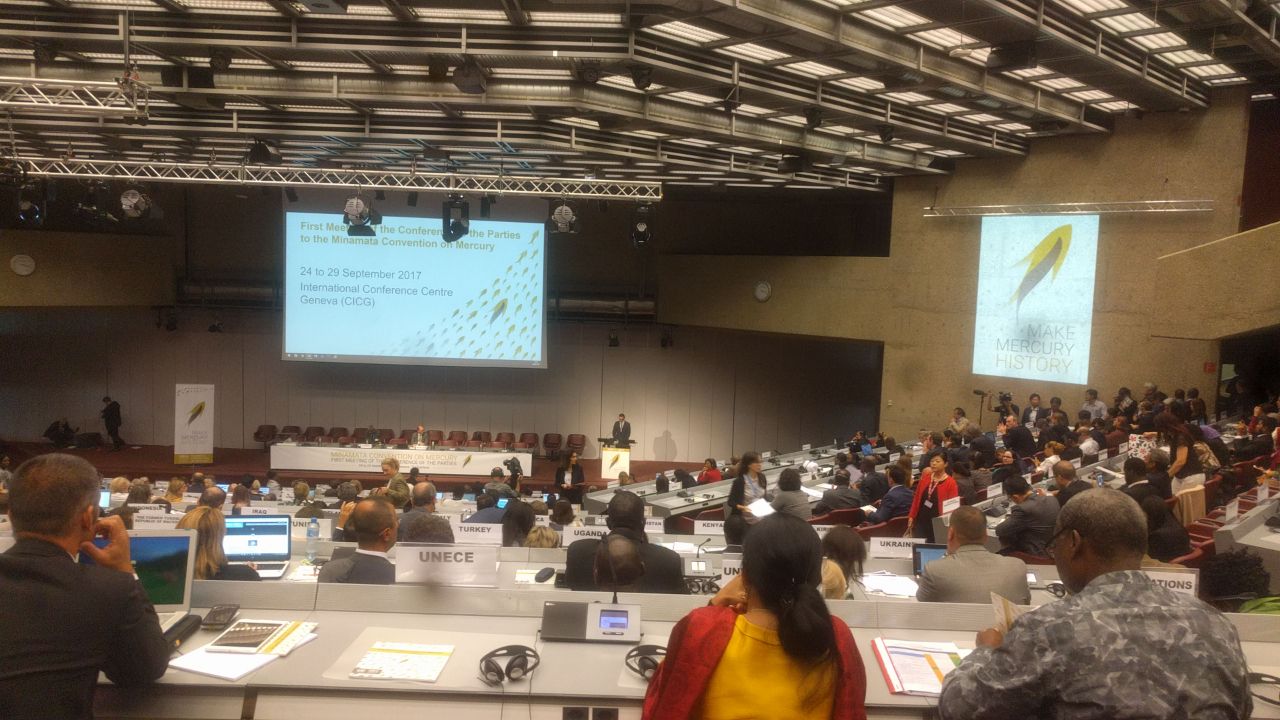Update: A Pure Earth team is currently at COP1, joining representatives from around the globe who have come together to help make mercury history. Our team is attending daily sessions as well as meetings to discuss guidance on the management of contaminated sites, for which we have shared our guide for governments (see below). Read daily coverage of the discussions here.
 Our team – Lucie Concordel and Lilian Corra – hard at work at #COP1.[/caption]
Our team – Lucie Concordel and Lilian Corra – hard at work at #COP1.[/caption]

Pure Earth’s guide to identifying, assessing and managing mercury-contaminated sites has been submitted to the UN and will be one of the sources used to compile an official document to help governments abide by the Convention.
The treaty, ratified by over 70 countries to date, is a major step in the international fight against mercury. It includes provisions targeted at reducing the largest source of global emissions–artisanal and small-scale gold mining. This is a problem that Pure Earth has been working to solve by teaching gold miners mercury-free techniques, educating mining communities, and helping governments plan cleanup.
The Pure Earth guidance document is drawn from our years of experience and expertise in the issue:
This document focuses primarily on the design and implementation of national contaminated site identification and screening programs, and on the roles of the public, private and civil society sectors to facilitate public outreach and education, and to ensure effective and efficient risk-reduction activities at mercury-contaminated sites.
Pure Earth believes that a comprehensive approach to addressing mercury contamination must include actions to identify and reduce environmental health risks, and that such risks should be a primary factor in setting priorities for future actions. This guidance aims to facilitate concrete actions to reduce the impacts of mercury contamination, with a particular emphasis on environmental health risk identification and reduction strategies for low- and middle-income countries.
The guidance document was prepared by Andrew McCartor, Regional Director for South Asia and East Asia, Pure Earth; with contributions from Bryn Thoms, Environmental Geologist; John Keith, Technical Advisor, Pure Earth; and Bret Ericson, Director of Operations, Pure Earth.




